Anthurium Bullatus make a perfect ornamental plant for home and office thanks to its hourglass-shaped, large green leaves spanning almost two feet.
Did you know these tropical plants from Ecuadorian forests are equally known for their air-purifying abilities?
However, minimal yet primary care is essential to ensure your Bullatus remains blooming round the year and keeps cleansing the indoor air.
Anthurium Bullatus thrives in warm temperatures ranging from 70°F to 90°F, diffused sunlight, 60% humidity, and evenly moist soil while only requiring mild fertilization once every 2-3 months to ensure even growth.

Primary care is not all the Anthurium Bullatus needs but a fair amount of love and concern multiple times a week to grow well.
Read on to know more about different ways to keep your Anthurium Bullatus happy round the clock.
Table of Contents
Overview of Anthurium Bullatus
Anthurium Bullatus has no official name; however, most growers and sellers refer to it as Anthurium Bullatus.
Some even call it by its previous name, Anthurium Pandurilaminum.
Did you know there is a debate about whether it is a mother plant or a hybrid of Anthurium Subsignatum and Anthurium Veitchii?
You would find your Bullatus resembling these two Anthuriums a lot in appearance.

Today, every Anthurium Bullatus found in the market is propagated from the same plant found in the Esmeraldas Provence of Lita Santiago in Ecuador.
Found at 150-350 meters in Ecuadorian tropical forests, Anthurium Bullatus requires a conducive growing environment at home to thrive.
Here is a table describing the basic facts about the plant.
| Scientific Name | Anthurium pandurilaminum |
| Common Name | Anthurium Bullatus (nee’ Bullatum) |
| Native | Ecuador |
| Family | Araceae |
| Genus | Anthurium |
| Growth Zone | USDA 10 or higher |
| Plant Type | Evergreen |
| Growth Size | 4-6 feet tall and 2-3 feet wide |
| Growth habit | Moderate to Fast |
| Foliage | Hourglass-shaped, large, deep-green leaves |
| Flowering | None |
| Soil pH | 5.5-6.5 |
| Toxicity | Toxic to Humans and Pets |
| Common Pests | Mealybugs, Scales, Aphids, and Spider mites |
| Horticultural Diseases | Bacterial blight, Leaf Spot, and Root rot |
You have a reasonably fast-growing plant in your hand, reaching its maturity within two years.
Hence, you will be rewarded with a decorative plant boasting amazingly unique leaves.
Soon enough, they will begin indoor cleansing air from air-borne toxins like benzene or toluene, formaldehyde, carbon dioxide, and ammonia.
However, keep your children and pets away from the plant, as they are known to be highly toxic.
Anthurium Bullatus – Complete Grow & Care Guide
Ensure to provide a conducive growing environment that closely mimics the Ecuadorian tropical forests for keeping your Anthurium Bullatus happy.
These are low-maintenance plants that do not demand frequent pruning or repotting and manage well in average home conditions.
Check out the complete care guide for Anthurium Bullatus.
 8-10 hours of bright, indirect sunlight |  Regular watering for evenly moist soil |
 Perlite-based fast-draining potting mix |  Phosphorus-rich plant food once in 2-3 months in the growing season |
 Anything 70 to 90°F (21-31°C) |  About 60% Humidity |
 Repot only when the root ball engulfs the soil |  Propagate via Stem cuttings |
1. Medium Indirect Sunlight
Anthurium is a shade-loving that thrives in indirect sunlight.
The same goes for Bullatus species that does well in a warm corner of your home with moderate amounts of indirect sunlight throughout the day.
Keep your Anthurium Bullatus along the wall or close to the window that receives at least 8 hours of indirect or diffused sunlight throughout the day.
The duration and amount of light your Anthurium receives plays a significant role in gaining optimum height.

A study by multiple research institutes indicates that Anthurium grows evenly at 1200-2000 ft-candles of light, where the higher feet candles ensure healthy blossoms.
However, exposing them to direct sunlight will quickly burn the leaves, leaving a dry and sick plant.
Similarly, the low light condition will affect the Chrolorphyll production, giving a discolored and wilted plant.
Check out for these signs to diagnose your Anthurium for severe light issues.
| Overwatered Plant | Underwatered Plant |
|---|---|
| Yellowing, limping, and droopy foliage | Wilted and crispy leaves |
| Decayed lower roots | Brown leaf edges |
| Slowed plant growth | Curled and browned leaves |
| Root Rot | Stunted foliage growth |
Tips to Provide Adequate Sunlight
- Place them in a location with 50-75% sunlight, which equates to 6-8 hours of daylight.
- Choose a well-lit location: patio, door, and window that gets early morning sun.
- Place them in an east-facing window. About two hours of direct sunlight would prove to be beneficial.
- Otherwise, place them in the north-facing or west-facing window to avoid direct sunlight exposure.
- When kept at the south-facing window, ensure to keep them 5-6 feet away to prevent exposure to direct sunlight.
- Turn the plant at the same spot every few weeks to ensure an even bloom on each side.
Move your plant under the appropriate grow lights for at least 8-12 hours a day when sunlight becomes scarce, especially in fall and winter.
Choose SANSI 15W LED Bulbs or JUHEFA LED grow light with IR & UV for indoor-grown Anthurium Bullatus.
2. Frequent Watering
Anthurium Bullatus loves frequent watering but does not like sitting in a pool of water as it may lead to the onset of the root problem.
Provide 300-500 ml water to a 5″ pot every 4-5 days to ensure evenly moist soil. Alternatively, deepwater it every week with 800ml of water.
The idea is to use fast-draining soil that lets out excess water immediately and frequently watering to keep the soil evenly moist.
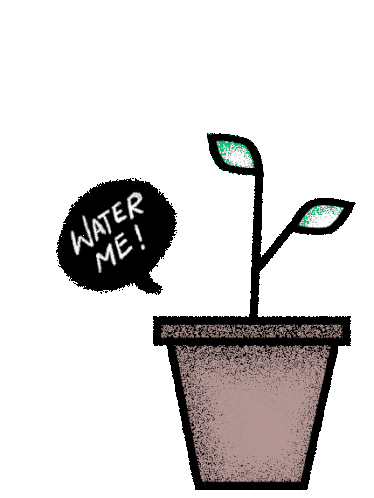
However, it should be allowed slightly dry out before watering; about 1-2 inches of topsoil should dry between watering.
Otherwise, a severely waterlogged Anthurium Bullatus would begin exhibiting signs of root rot, including;
- Yellowing, limping, and droopy foliage
- Decayed lower roots
- Slowed plant growth
It would not need the same amount of watering during dormancy; hence, cut back on watering to once in two weeks during fall and winter.
But be careful not to leave it dry for a prolonged duration as it can invite further problems, including;
- Wilted and crispy leaves
- Brown leaf edges
- Curled and browned leaves
- Stunted foliage growth
Tips to Provide Adequate Watering
- Check whether the topsoil has dried slightly before every watering using a soil moisture meter.
- Otherwise, insert your finger to check whether the top two inches of soil feel dry or crumbled.
- Water every 4-5 days or once a week in the growing season.
- Run the plant under the tap and let it sit on the sink until all the water comes out of the drainage hole.
- Cut back on watering for a severely overwatered plant (brown soil, decayed stems, mushy roots) until it seems to revive.
- For thirsty plants, immediately deepwater them to moisten the soil or let them sit on a pebble tray filled with water.
- Use distilled or rainwater water kept at room temperature to prevent chemical build-up in the soil.
3. Fairly Warm Temperature
Anthurium Bullatus grows on Ecuadorian forest beds at the elevation of 150 meters that receives ample warm temperature and humidity.
Therefore, you should try mimicking a similar temperature at home.
Temperatures between 70-90°F (21-31°C) are ideal for Anthurium Bullatus in the growing seasons, while nothing less than 65°F (18°C) at night.

Anything under 55°F (12.7°C) will push back the plant growth or even kill it as this plant is not cold-hardy.
A warm temperature level is proportional to high humid conditions; hence they grow well in USDA hardiness zones 10 or above.
Similarly, anything above 90°F can invite evaporation (excess transpiration of water from the leaves), leading to dry, crispy foliage.
Tips to Provide Optimum Temperature
- Place your Anthurium Bullatus in a brightly sunny location during the growing season, close to a window, door, or patio.
- Increase the watering frequency if the temperature rises above 90°F.
- Occasionally misting the leaves can help offset the risk of high temperatures.
- Keep the plant away from the window when the temperature drops below 70°F, especially in fall or winter.
- Cover your Anthurium with a frost blanket or a plastic bag to prevent cold stress.
- Add a layer of pine mulch to help retain the warmth.
- Alternatively, place a heating pad under the container to help the soil retain warmth.
Quick Tip: Do not keep your Anthurium Bullatus in front of the Air Conditioner or heater to avoid extreme temperature changes.
4. High Humidity Level
Anthurium Bullatus thrives in the moderate humid condition that resonates with Amazonian forests.
Provide around 60% of humidity or above to ensure healthy-looking deep-green leaves, where anything under 60% can leave the plant dry, encouraging excess transpiration.

Anthurium Bullatus suffering from low humidity levels can lead to dull and discolored leaves, with multiple signs, including
- Tips and edges of the leaves turning brown
- Untimely curling and wilting
- Stunted growth due to increased water loss
These signs mimic the exact conditions exhibited by the highly thirsty plants.
Tips to Provide Optimum Humidity
- Assess the humidity level using a digital hygrometer to raise or lower it.
- Huddle all the houseplants together to boost humid conditions naturally.
- Keep your Anthurium close to bathroom or kitchen areas that remain naturally humid.
- Consider installing an electric humidifier to maintain the humidity at the correct level as the best solution,
- Mist the plant leaves regularly in spring and summer to increase humidity levels, especially in the early morning.
Pro Tip: Place the plant over a pebble tray filled with water to increase humidity around the plant naturally.
5. Well-draining Potting Mix
Anthurium Bullatus enjoys growing in fast-draining soil to prevent soil compaction when dry or clogging due to excessive watering.
You can easily prepare it at home using various materials or mixing commercial Anthurium potting mix with home products.
An organic potting mix based on perlite, peat moss, and potting soil with some coco coir and orchid bark will prepare a perfect potting mix for Anthurium Bullatus.

Ensure your Anthurium mix retain a slightly acidic level required by tropical plants.
Prepare an Ideal Potting Mix at Home
Here is how you can prepare an ideal fast-draining Anthurium mix at home.
- One part perlite
- Same part peat moss and potting soil
- Half part coco coir
- Half part orchid bark
Alternatively, you can mix the following items.
- Two parts orchid mix
- One part of activated charcoal
- Same part perlite and peat
However, avoid adding too much soil, leading to compact soil that retains more moisture. Finally, cover the top with a fine layer of pine mulch to help retain warmth.
You can also buy some commercial potting mix for your Anthurium Bullatus. We have listed some of our favorite potting mixes;
6. Occasional Fertilization
Like any houseplant, Anthurium Bullatus enjoys nutritional plant food from time to time.
However, it would not require frequent fertilization as the plant absorbs the nutrients slowly.
Fertilize your Anthurium Bullatus once every 2 to 3 months throughout spring and summer to witness healthy plant growth and large, deep-green foliage.

Ensure to use mild plant food to prevent overfertilization, preventing harmful salt buildup in the soil that may choke the plant roots from getting air.
An overfertilized Anthurium Bullatus will start exhibiting visible changes such as;
- Yellowing leaves
- Stunted growth
- Drooping foliage
- Compact and light-colored soil
- Burned Foliage
- Some may even exhibit browning foliage or burn spots and leggy stem growth.

Steps to Fertilize Anthurium Bullatus
Here are a few steps to properly fertilize your plant.
- Begin with watering your plant thoroughly.
- Allow the excess water to flow out from the drainage holes.
- Add half a tablespoon of liquid fertilizer to a gallon of water or ¼ solution.
- Alternatively, spray granular fertilizer on the soil.
- Water the plant again with this diluted fertilizer, but avoid watering from above the foliage.
Tips to Fertilize Anthurium Bullatus
- Use plant food slightly rich in Phosphorus contents.
- Apply a slow-release granular fertilizer or Osmocote 19-6-12 every three months.
- Alternatively, you can use liquid-based fertilizer but ensure to dilute the liquid fertilizer to ¼ strength before applying.
- Ensure the liquid fertilizer does not touch parts of the stem and leaves.
- Hold back on fertilizing in early fall until late winter when the plant becomes dormant.
7. Growth Rate, Foliage, and Pruning
Anthurium Bullatus is a fast grower that will attain maturity within the first two years of growth.
A mature plant will retain 2-4 feet in height and grow large leaves from each stem with an ideal growing condition.
However, ensure to provide optimum indirect sunlight, relatively humid condition, and warm condition to attain an actual growth rate.
When the Anthurium Bullatus begins to mature, the leaves will shimmer with a deep-green shade.

The leaves will become more dramatic and retain their signature hourglass shape with exaggerated top lobes.
A single mature leaf would measure up to 2 feet in length. You would also witness slight ripples around the leaf edges.
However, Anthurium Bullatus is not known to blossom; hence, you should focus on improving the foliage.
Due to the lack of bushy leaves, it would not require occasional pruning. You can keep occasional trimming to remove dead and decayed leaves and stems.

8. Repotting Anthurium Bullatus
Anthurium Bullatus needs repotting as it grows to retain a correct posture and enough space to grow its roots.
As a fast-growing plant, you would need to repot your Anthurium Bullatus once every one or two years.
Otherwise, slide out the plant to check for root bulbs size in early spring and transplant it to a new pot if the root has engulfed the entire soil.

As a general guideline, choose the new container no more than an inch or two bigger in diameter.
Steps to Repot an Anthurium Bullatus
Here is a step-by-step guide to repotting the Anthurium Bullatus.
Step #1: Choose a New Pot
- Get a new pot 2-inches larger than the previous one.
- Ideally, choose a pot made from any appropriate material such as clay, ceramic, or terracotta.
- When choosing a plastic pot, ensure it has 5-6 drainage holes.
Here are a few recommendations.
| Container | Specification |
|---|---|
| Classis Planter (Plastic) | They are durable and lightweight. The drainage holes lie at the bottom |
| LE TAUCI Ceramic Plant Pots | 4+5+6 inch, Set of 3, Planters with holes in the bottom |
| Plastic Planter, HOMENOTE | Comes in five different sizes 7/6/5.5/4.8/4.5 Inch |
Step #2: Prepare the Potting Medium
- Prepare an ideal potting mix at home using the guideline given above.
- Fill the new container to one-third and let it sit.

Step #3: Transplant Your Anthurium Bullatus
- Gently slide out the plant from its current pot and shake the soil from the roots.
- Inspect for visible signs of root rot, such as black, mushy, or dark feeder roots.
- Cut the infected parts using a pruning shear and apply some fungicide to the end to prevent infection.
- Place the plant into a new pot with roots facing downwards and add the remaining two-thirds of the potting mix.
- Moisten the new container thoroughly until all the water comes out of the drainage holes.
- Let it sit in a warm location with enough indirect sunlight.
Pro Tip: Repot your Anthurium Bullatus in early spring to get a healthy growth throughout the growing season.
Toxicity of Anthurium Bullatus
Anthurium Bullatus is categorized as an ordinary houseplant toxic to humans and pets.
It contains calcium oxalate crystals that may cause harm when ingested or touched by bare skin.
Anthurium toxicity mainly troubles the oropharynx of animals and humans, causing oral irritation and other health issues.
Warning signals in animals and humans include;
- Drooling
- Pawing at the mouth or face
- Oral discomfort
- Appetite decreases
- Vomiting
- Swollen lip and tongue
- Heavy breathing
The University of California categorizes the Anthurium plant in third and fourth-class toxicity.
Contact the American Association of Poison Control Center at (800) 222-1222.
For poisoning in pets, get in touch with ASPCA Poison Center at (800) 426-4435.

Propagating Anthurium Bullatus
Do not miss the chance to propagate your Anthurium Bullatus to decorate your home or office with multiple plants.
The best thing about Anthurium Bullatus is that they are easy to propagate from the stem cutting; all you need is a suitable medium and propagation technique.
However, it does not respond well to the root division method, as propagating the root bulb section can leave the cutting under stress.
On the other hand, growing them from the seeds may be impossible because achieving Anthurium Bullatus seeds is impossible.
Here is how to propagate Anthurium Bullatus at home.
Step 1: Take the Cutting
You should begin taking the stem cutting in spring or early summer when the plant is actively growing.
- Start with disinfecting your pruning shears with ethanol or 70% isopropyl alcohol.
- Select a healthy-looking, green stem with at least one leaf on them.
- Cut the stem just below the bottom leaf node using the pruning shear.
- Remove additional leaves and leave only two leaves on the stem.

Pro Tip: You can also take multiple cuttings at once but ensure that these cuttings are 4-6 inches long and leave only a little stem (1/2 inches) below the bottom node.
Step 2: Choose a Potting medium
You can root the stem by cutting it in two different potting mediums. The results may vary slightly in duration.
1. Rooting in Potting Mix
For rotting in potting mix, consider applying fungicide and rooting hormone to the cut end to boost the growth rate.
- Do not let the stem cutting sit idle for a longer duration.
- Start with mixing rooting hormone and fungicide.
- Gently apply it to the cut ends to prevent fungus infestation. Alternatively, you can use some cinnamon powder to cut.
Prepare the Potting Mix
- Prepare a small container or jar and appropriate potting mix similar to the mother plant, and fill each pot with ⅓ parts.
- Gently slide the stem cutting into the potting mix, but ensure at least one of the two nodes remains outside the potting mix.
- Thoroughly water the mix and set it aside in a warm location.
Anthurium propagated in soil medium (Source: Ecuagenera)
The stem cutting will increase and produce feeder roots within 5-6 weeks.
Note: Humidity and moisture play an essential part in the rooting process; hence, do not forget to cover the plant with a plastic bag to create a conducive environment.
2. Rooting in Water Medium
Rooting in the water medium, also known as hydroponics, is another popular method for propagation.
- Take a clean glass or clear jar filled with distilled water.
- Add some liquid rooting hormone to the water or apply some rooting hormone paste to the cut.
- Insert the cutting into the water and leave it in a warm location with bright indirect sunlight.
- Replace the water every 4-5 days or when it starts becoming darker.
- Wait until 2-3 weeks to begin seeing new feeder roots. Wait another few weeks for the stems to sprout fresh leaves.
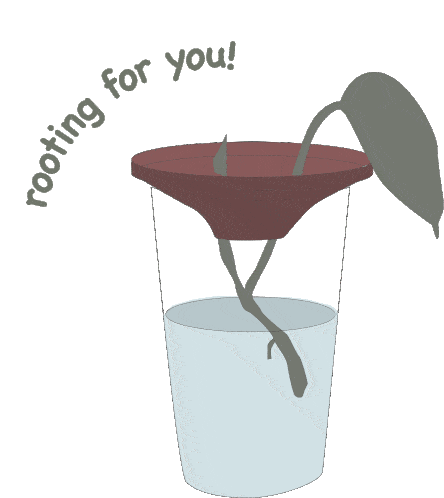
Once the feeder roots become at least an inch long, you can transplant them to a pot with potting medium.
Read our article about propagating Anthurium plants at home.
Common Problems with Anthurium Bullatus
Since Anthurium Bullatus is native to tropical rainforests, it is prone to multiple problems, including pests and diseases, when grown as a houseplant.
1. Common Anthurium Pests
Anthurium Bullatus is a hardy plant that rarely attracts pests but becomes susceptible to poor growing circumstances when grown in the wrong conditions.
Bullatus is susceptible to common pests like scales, mealybugs, spider mites, nematodes, and aphids.
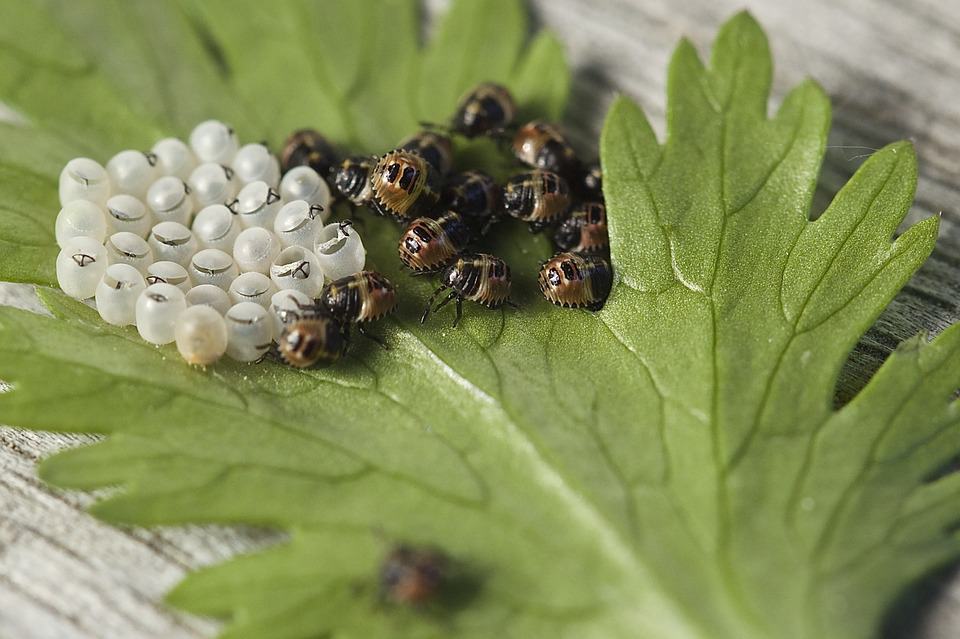
Check out the pests and their symptoms.
| Common Pests | Symptoms |
|---|---|
| Scale | 1. Brown bumpy and white cottony lumps can be seen on the undersides of the leaves 2. The leaves start wilting or drooping 3. Discoloration of leaves along with brown/white spots. |
| Aphids | 1. Curling and falling off leaves 2. Stunted growth |
| Mealybugs | 1. White cotton-like structure forms on the undersides of the leaves 2. Curling, wilting and falling off leaves |
| Fungus Gnats | 1. Discoloration of leaves. 2. Wilting, drooping and falling off leaves 3. Stunted growth |
| Spider Mites | 1. Discoloration of leaves 2. Stippled and yellowed leaves 3. Fine webbing on leaves might appear on the leaves. |
| Thrips | 1. Silver patches develops on the leaves and flowers 2. Sooty spots, brown and black patches appear on the leaves |
Solutions
- Most infestations are harmless and can be prevented by trimming the infected parts.
- Otherwise, handpick the visible pests before applying any other solutions.
- Soil nematodes reside deep inside the potting mix requiring solarizing or heating the small batches to 140°F in the oven.
- Dip a cotton ball in the 98% Isopropyl alcohol and wipe the infected parts to remove scales, aphids, and thrips.
- Take a blunt knife and scrape off scales on the stem and leaves’ undersides and hollow sections.
- Spray your plant with soapy warm water solution as both treatment and preventive measures.
- Alternatively, apply your plant with horticultural oil or Neem oil and wipe the surface.
Pro Tip: Dilute Pyrethrin insecticide by mixing with water and spraying the solution over the plant to kill the pests effectively.
Preventive Measures
- Begin with quarantining new plants before bringing them home or adding them to your collection.
- Avoid overwatering and excessively wet leaves to prevent over humid conditions.
- Purchase certified Aphid and nematode-free potting soil from the market.
- Spray your Anthurium with a soapy water solution every few weeks to keep it clean.
2. Horticultural Diseases
Anthuriums in poor condition, kept in an overtly humid and moist environment, can invite many horticultural diseases.
They are mainly predisposed to fungal and bacterial diseases such as bacterial blight, bacterial wilt, and leaf spot diseases.
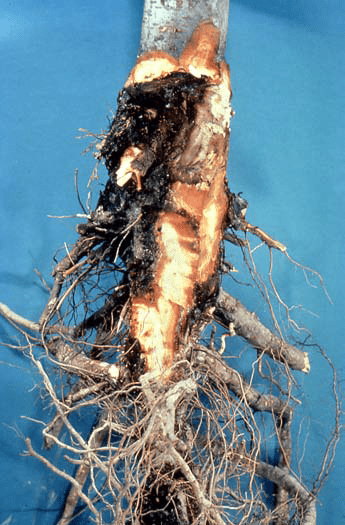
The list of horticultural diseases and symptoms.
| Disease | Symptoms |
|---|---|
| Root Rot Disease | It is caused by Phytophthora and Pythium, leading to browning leaves or black lesions. Roots become mushy and soft. |
| Leaf Spot Fungus | The causative agents include Alternaria, Cercospora, Colletotrichum, and Myrothecium. It causes brown or black circular patches along the edges of leaves. |
| Bacterial Blight | Yellowed, water-soaked lesions along the leaf margins, causing puncture. Invading bacteria quickly spread throughout the plant |
| Fusarium wilt | Yellowing of leaves along with appearance of brown, bronze color. Infection causes bacterial ooze (brown slime) |
Solutions
- Remove the plant that seems severely sick from root rot. The indications include smelly soil, wilted stems, or dead leaves.
- Otherwise, trim the infected parts, including leaves, stems, and feeder roots, to remove root rot.
- Use a fungicide containing chlorothalonil, the active ingredient in Daconil Fungicide, to treat botrytis blight.
- Add fungicides containing copper, Benomyl, or Mancozeb into the water and directly apply the solution onto the soil.
- Apply fungicides containing phosphorous acid onto the soil to treat bacterial wilt. Do follow the user manual before applying the solution.
- Use all-purpose Agrimycin spray to treat bacterial infection.
Preventive Measures
- Begin with quarantining the new plants for at least two weeks when you get the early indications.
- Strictly follow the watering schedule and let the top few inches of soil dry out between watering.
- Prevent wetting the leaves when watering to avoid wet conditions.
- Add an electric humidifier to monitor and control the humidity level to suit the Anthurium.
- Use certified disease-free propagation material and sterilize the tools before using.
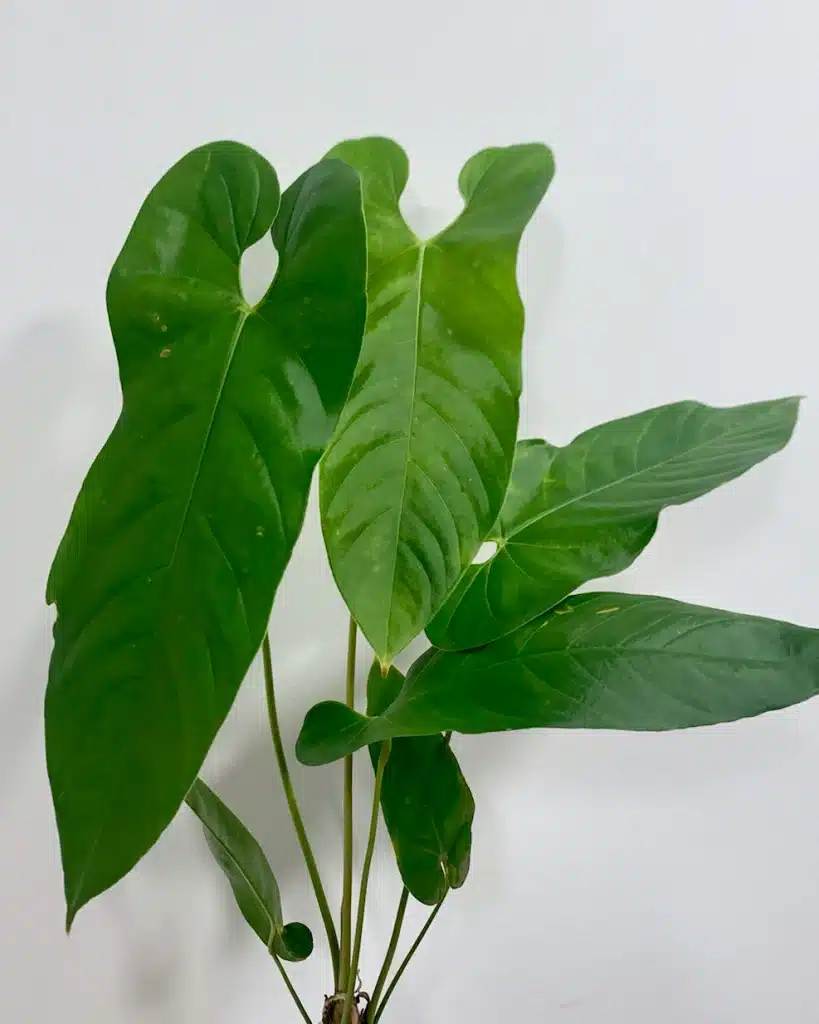
FAQs About Anthurium Bullatus
How to Revive the Dormant Anthurium Bullatus?
Anthurium Bullatus is a drought-tolerant plant that will survive days with water; however, drying soil may send the plant into dormancy.
Similarly, low light conditions and cold temperatures may send it into dormancy.
Water it thoroughly and place it in a location with warm temperature with diffused sunlight to revive your dormant plant.
Is Anthurium Bullatus a Low-maintenance Plant?
Anthurium Bullatus is a low-maintenance plant that is beginner-friendly.
It does not require any special care; however, you must follow the essential care guide to ensure a healthy plant and even growth.
Should you Provide Direct Sunlight to Anthurium Bullatus?
Anthurium Bullatus can withstand some direct sunlight. It may be beneficial for their growth.
However, ensure it is the early morning sun and only limits the light intake to two hours to prevent leaf burn.
How Long would your Anthurium Bullatus Live?
A healthy Anthurium Bullatus can live for 10-15 years with proper care.
Otherwise, consider propagating the plant every few years to continue its livelihood.

Conclusion
Anthurium Bullatus is a gem of tropical houseplants that enhance the décor and clean the indoor air of toxins.
There is no doubt that you should try growing one in your home and remember this guide to avoid making the usual mistakes.
Provide warm temperature, diffused sunlight, moderate humidity, evenly moist soil, and occasional plant food.
Ensure to get a healthy Anthurium Bullatus thriving with signature large leaves.
Read more about the care guide for Anthurium Metallicum, Cutucuense, and Brownii.


1 comment
I like Anthurium. Great article and Nice information, Thank you for your post.